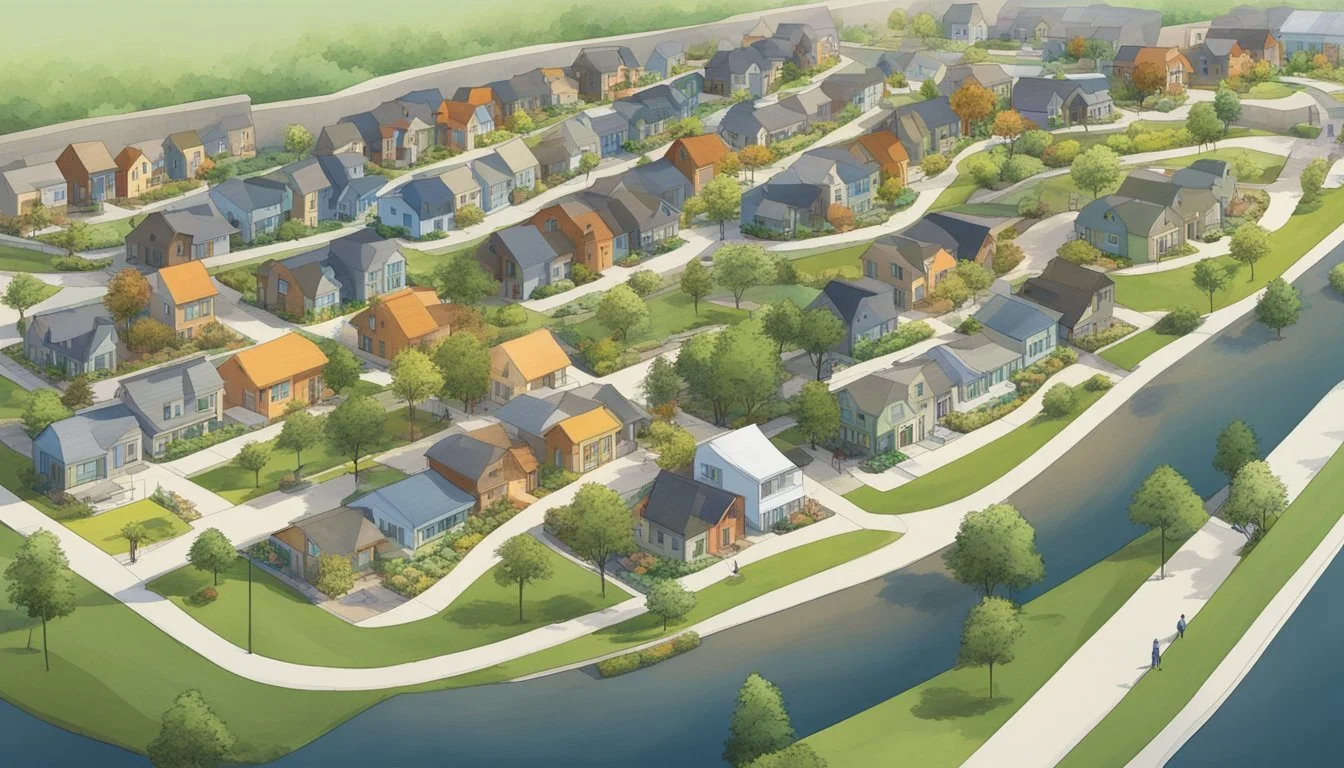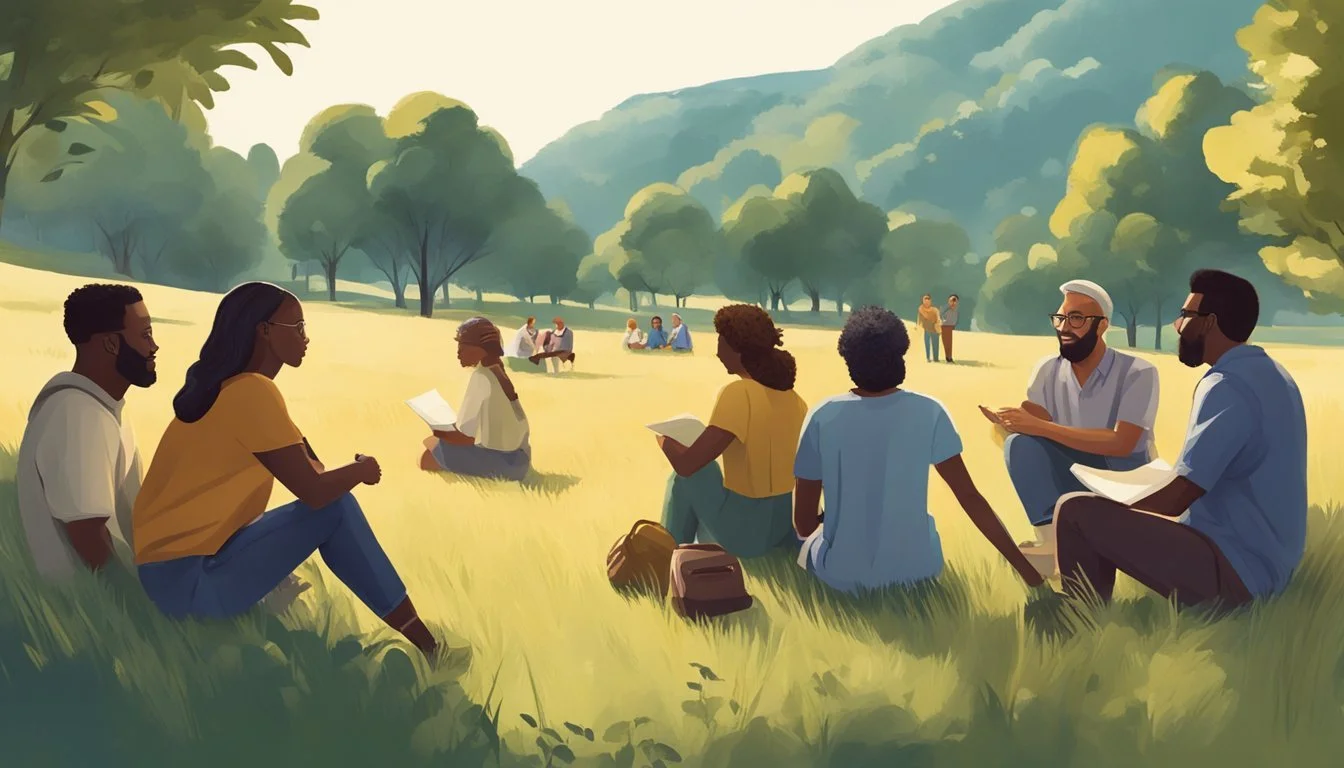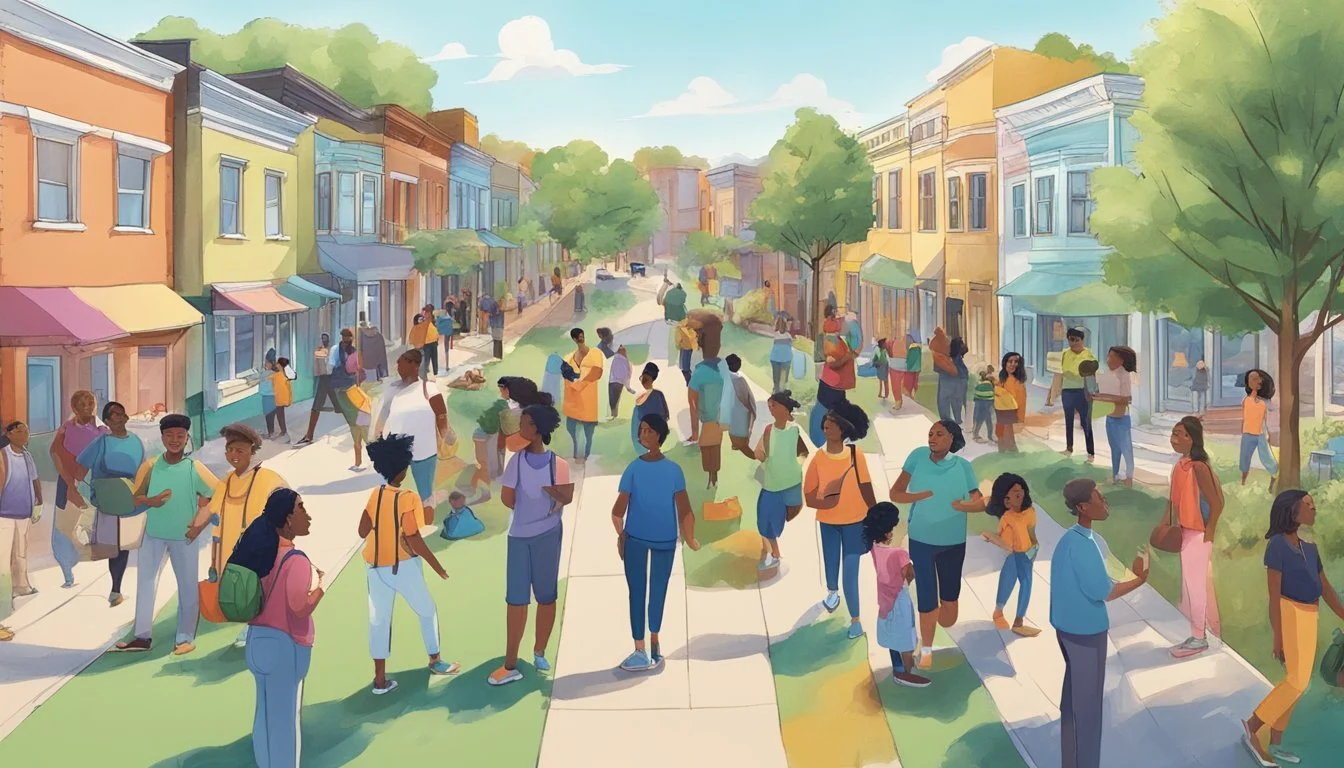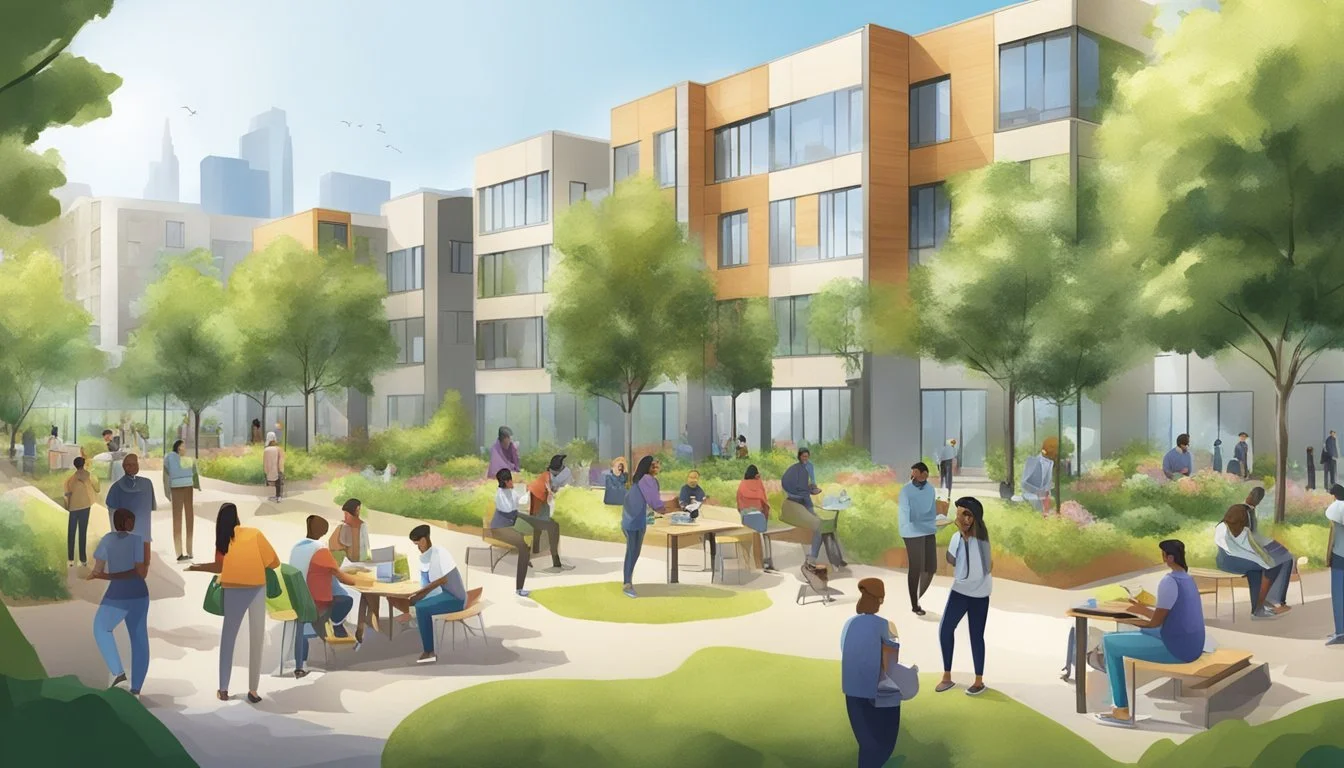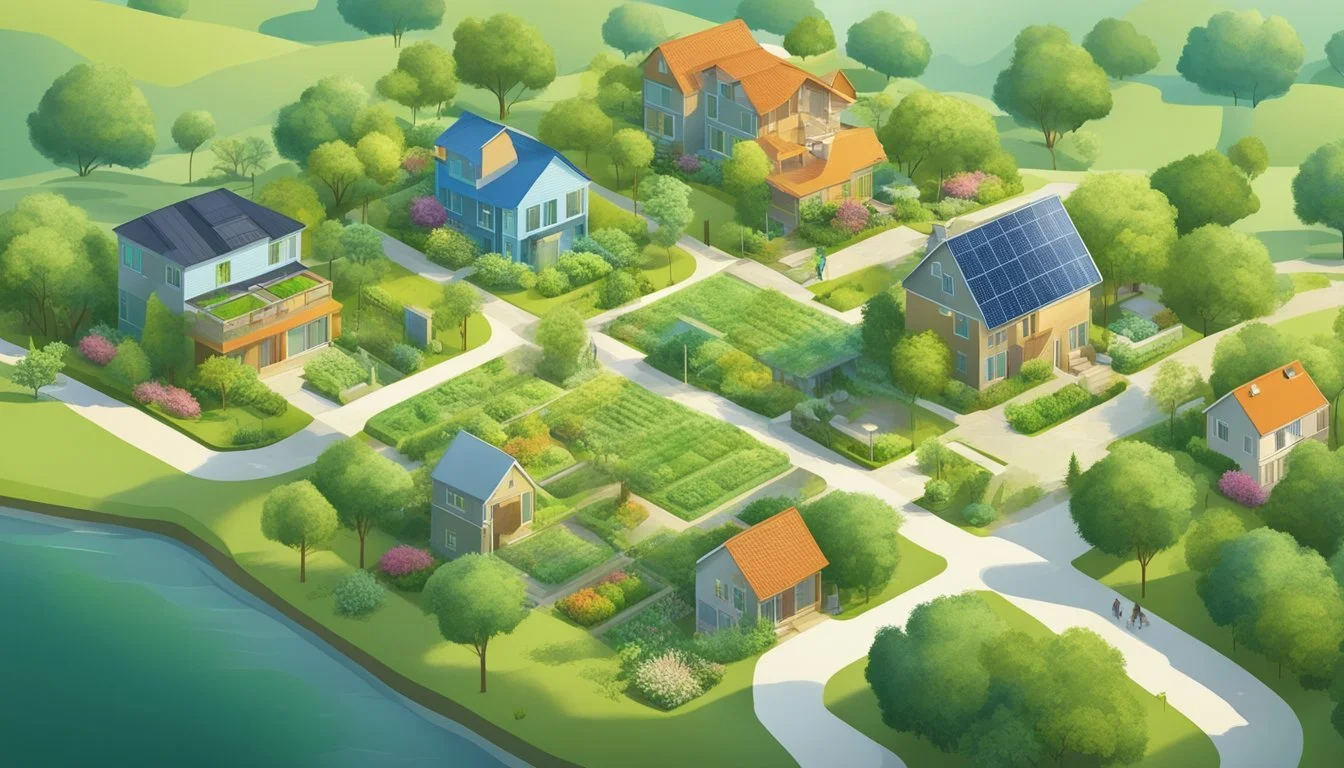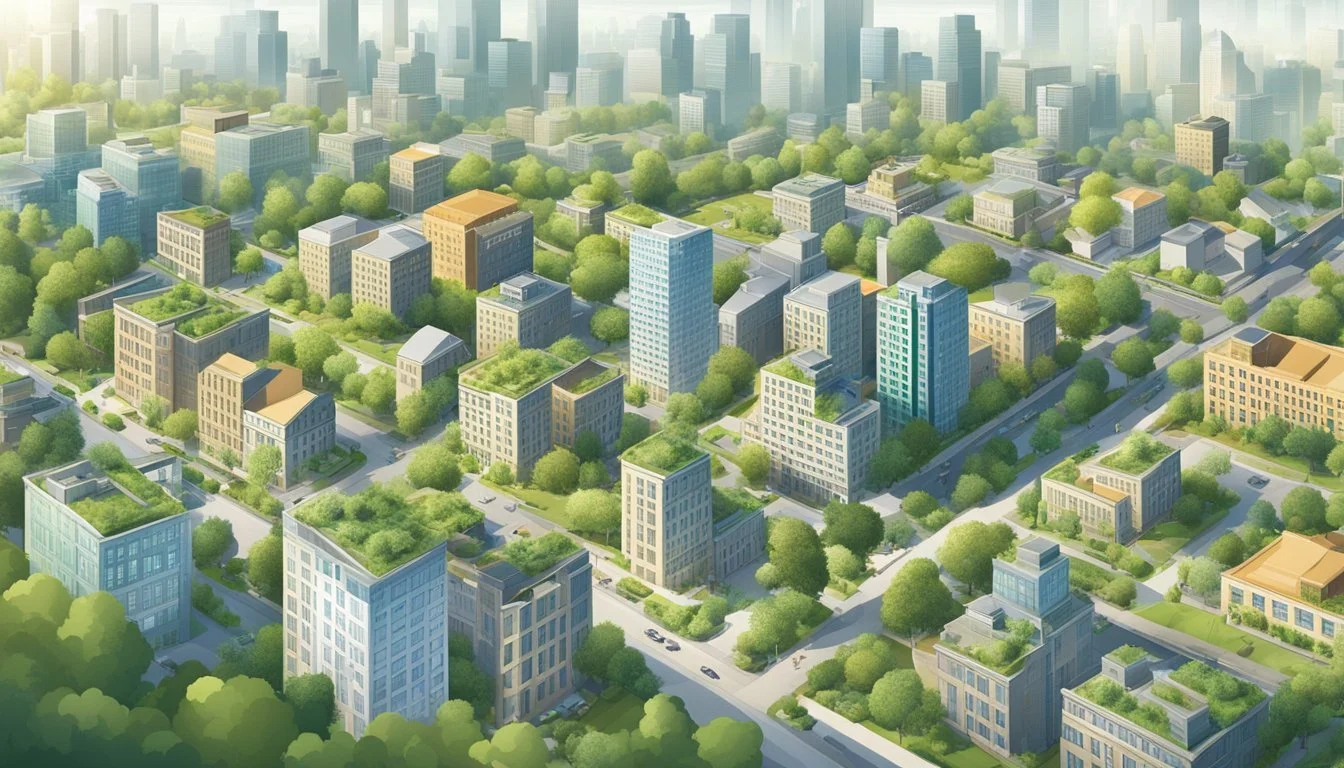Free Land and Community Development
Building Vibrant Neighborhoods
Access to free land can be a powerful catalyst for community development, offering a unique opportunity to create new neighborhoods while fostering economic growth. Transforming vacant lots into vibrant, productive spaces can address multiple urban challenges, from reducing crime to boosting local food security. For instance, initiatives like the Detroit Black Community Food Security Network have successfully turned empty plots into urban farms, creating jobs and providing fresh produce to local residents.
Beyond urban farming, strategies such as community land trusts and revitalization funds play a crucial role. These models ensure that development benefits long-time residents and prevents displacement. With proper planning and community engagement, these efforts enhance quality of life, offering improved housing, better schools, and stronger connections to public transportation.
Compact development also contributes significantly to crafting thriving neighborhoods. By efficiently utilizing land, these approaches create high-density, vibrant communities that offer convenience and a higher quality of life. Examples from diverse cities illustrate the potential for replicable success, guiding others towards creating their own sustainable and resilient neighborhoods.
Historical Context of Land Use and Community Development
The history of land use and community development has significantly shaped the current urban landscape. Understanding the key historical points can provide insights into current practices and challenges in urban planning and development.
Origins of Community Development
Community development date back to ancient civilizations, where urban planning prioritized the strategic use of land.
In medieval times, towns were often built around a central marketplace, emphasizing accessibility and community cohesion.
By the 19th century, the Industrial Revolution brought rapid urbanization, prompting the need for organized community spaces to support the growing workforce.
Planned communities with mixed-use developments began to emerge, setting the foundations for modern urban planning principles.
Patterns of Urban Renewal and Gentrification
Urban renewal gained traction in the mid-20th century as a response to the decline of inner-city neighborhoods. Governments funded large-scale projects to revitalize outdated urban areas.
The process often led to gentrification, where lower-income residents were displaced by higher-income newcomers. This shift created economic and social disparities within communities.
Key examples include the renovation of SoHo in New York City and the redevelopment of London's Docklands.
The focus shifted towards balancing renewal efforts with the need to preserve community integrity and prevent displacement.
Significance of Affordable Housing in Urban History
Affordable housing has been a critical issue throughout urban development history. Early efforts included public housing programs in the 1930s, aiming to provide safe and affordable homes for low-income families.
Post-World War II, the demand for housing soared, leading to suburban expansion and the development of affordable housing projects.
Programs like the U.S. Federal Housing Administration's affordable mortgage schemes played a vital role in promoting homeownership among working-class citizens.
Over time, the lack of affordable housing became a pressing concern, influencing modern urban policies to prioritize mixed-income developments and equitable access to housing.
Fundamentals of Free Land Initiatives
Free land initiatives often involve programs by local governments or organizations that aim to transfer vacant or underutilized properties to individuals or groups for development. These initiatives can revitalize communities, promote economic growth, and provide affordable housing opportunities.
Understanding the Concept of Free Land
Free land programs typically involve the transfer of public land to private individuals or organizations at no cost. These programs are designed to encourage development, reduce urban blight, and attract new residents to declining areas.
Some common requirements may include a commitment to build a residential or commercial structure within a certain timeframe, maintaining the property, and sometimes a refundable deposit. These programs often target specific demographic groups such as aspiring farmers or community builders.
Case Studies: From New York to Pennsylvania
New York: The "Adopt-a-Lot" program allows individuals to acquire vacant urban land for free. This initiative has been particularly beneficial for urban farming and community gardens. Participants can transform neglected spaces into productive, green areas.
Pennsylvania: In various towns, local governments offer free land to attract new residents and businesses. These programs are often targeted at revitalizing shrinking populations and boosting local economies. For example, some towns offer free lots to families willing to build homes and settle in the area, sometimes with additional incentives like construction cost subsidies.
Both states showcase how strategic use of free land can address urban decline and support sustainable growth.
Planning and Policy for New Developments
Effective planning and policy for new developments require a comprehensive approach that addresses zoning regulations and the roles of city officials and planners. Careful consideration of land use ensures the creation of sustainable and well-organized communities.
Zoning and Regulatory Frameworks
Zoning laws are critical in shaping the structure of new neighborhoods. These regulations differentiate areas for residential, commercial, and industrial use to ensure a balanced development. By establishing zoning districts, planners can create environments that support diverse activities within a community.
Several zoning approaches, such as mixed-use zoning, promote pedestrian-friendly neighborhoods where amenities are easily accessible. This contrasts with conventional low-density suburban zoning, which often relies heavily on automobile transport.
Policies must also address building heights, density limits, and architectural standards to maintain the character of a neighborhood. This ensures efficient land use and prevents overcrowding. Additionally, regulations should incorporate green spaces and public facilities to enhance livability.
Role of City Officials and Planners
City officials and planners play pivotal roles in the successful implementation of development plans. They ensure that new projects comply with the municipality's vision and regulations.
Planners conduct extensive research and community consultations to gather input and align development projects with residents' needs. This participatory approach helps in creating spaces that are both functional and reflective of the community's character.
City officials are responsible for approving plans and overseeing their execution. They work with developers to address any regulatory issues, ensuring that projects meet all legal and safety standards. Their oversight guarantees that developments are sustainable and that public resources are used efficiently.
Principles of Community-Led Development
Community-led development empowers locals to take charge of their social, economic, and environmental initiatives. This approach encompasses various models that prioritize local insights and collective action.
Community Land Trusts and Ownership
Community Land Trusts (CLTs) are non-profit organizations that maintain the ownership of land while allowing the community to use and develop it. The trust typically holds the land in perpetuity and leases it to individuals or organizations. This model ensures that land remains affordable and accessible, fostering long-term stability and growth.
CLTs are based on democratic principles, with decision-making power vested in the community. Membership is open to anyone within the service area, ensuring inclusive participation. These organizations are crucial for creating sustainable housing solutions, preventing displacement, and enabling community-driven development projects. They also advocate for supportive legislation and secure funding for communal land tenure.
Community Development Corporations (CDCs)
Community Development Corporations (CDCs) are local entities focused on revitalizing communities through economic development, affordable housing, and social services. These non-profits operate at a neighborhood level and often engage in real estate development, infrastructure improvement, and job creation.
CDCs play a vital role in addressing community-specific needs. By actively involving residents in planning and decision-making, CDCs ensure that development projects align with the community's vision. Their activities range from building affordable housing complexes to launching local businesses. CDCs also collaborate with local governments, financial institutions, and other stakeholders to secure funding and implement projects that drive economic growth and social well-being.
Strategies for Sustainable Neighborhood Creation
Successful sustainable neighborhoods rely on integrating mixed-use and mixed-income housing, as well as effectively addressing transit and traffic concerns. These strategies ensure social inclusivity, efficient land use, and smooth city operations.
Integrating Mixed-Use and Mixed-Income Housing
Developing mixed-use and mixed-income housing promotes diversity and dynamism within neighborhoods. Mixed-use developments combine residential, commercial, and recreational spaces, reducing the need for long commutes and lowering traffic congestion. It enables residents to access essential services within walking distance, fostering a more vibrant community life.
Mixed-income housing ensures varied income levels coexist, enhancing social cohesion. It avoids the pitfalls of economically segregated neighborhoods, resulting in equitable access to opportunities and amenities. Policies that incentivize developers to include affordable housing units in their projects can be effective.
The incorporation of green spaces and public areas into these developments encourages outdoor activities and improves communal interaction. As density increases, ensuring adequate open spaces remains crucial for maintaining quality of life.
Addressing Transit and Traffic Concerns
Efficient transit systems and traffic management are vital for sustainable neighborhoods. Developing a well-connected street network with multiple transit options reduces dependence on personal vehicles. This not only mitigates traffic congestion but also lessens environmental pollution.
High-density areas benefit from increased public transit availability, including buses, trams, and bike lanes. Safe, pedestrian-friendly streets encourage walking and cycling, contributing to healthier lifestyles and reducing traffic.
Strategically placed parking facilities and traffic calming measures, such as roundabouts and speed bumps, improve safety and traffic flow. Integrating these elements ensures that neighborhoods remain accessible and well-functioning.
Prioritizing transit and traffic solutions alongside mixed-use housing developments supports the creation of livable, sustainable communities.
Affordability and Economic Considerations
Creating new neighborhoods through free land initiatives carries significant affordability and economic implications. This section discusses models ensuring permanent affordability, financing methods and challenges, and the potential for small business growth and economic opportunities.
Permanent Affordability Models
Permanent affordability is vital to ensure that new housing developments remain accessible to low- and moderate-income families. Community land trusts (CLTs) keep housing affordable by owning the land and leasing it to homeowners with long-term, renewable leases. Another method is using affordability periods, where homes must be sold to income-qualified buyers for a set number of years—such as 15 years—to prevent price escalation.
Inclusionary zoning policies require developers to include a certain percentage of affordable units in new developments, maintaining affordability across neighborhoods. These models work together to counteract market pressures that typically drive up housing costs, ensuring sustainable, inclusive communities.
Financing and Financial Challenges
Financing affordable housing is often complex due to the high costs associated with development. Municipalities and developers commonly use subsidies like the Low-Income Housing Tax Credit (LIHTC), which has successfully generated significant affordable housing units nationwide. Combining public funds with private investments can also attract more developers to affordable projects.
Challenges include securing enough funding and dealing with stringent financial requirements. Reduced-cost or donated land can offset some of these expenses, making projects more feasible. Local governments may also implement revenue-raising measures and offer forgivable loans to bridge affordability gaps, critical for reducing initial hurdles for low-income buyers.
Economic Opportunities and Small Businesses
New affordable housing developments present significant economic opportunities, particularly for small businesses. Affordable housing can increase disposable income for residents, which, in turn, supports local businesses. Mixed-income neighborhoods foster economic diversity, enabling a broader range of services and businesses to thrive.
Furthermore, developments often include commercial spaces, providing affordable rent for small businesses and community services. Initiatives like community-driven commercial projects or local business incubators can also be integrated to bolster economic growth and resilience among new and existing residents. This holistic approach not only improves housing but also sustains economic vitality.
Social Dynamics and Equity in Development
Creating equitable neighborhoods involves addressing displacement, fostering community wealth, and ensuring public safety. These factors are essential to preserving culture and promoting sustainable community development.
Mitigating Displacement and Preserving Neighborhood Culture
One major concern in community development is displacement. New projects can push out established residents, disrupting social ties and cultural identity. To mitigate this, developers can implement measures like affordable housing initiatives and rent control.
Stakeholder engagement is crucial. Involving long-term residents in planning ensures their needs are met. Preserving local landmarks and cultural centers also helps maintain a neighborhood's unique identity. This blend of thoughtful policy and active community participation helps maintain stability and foster a sense of belonging.
Fostering Community Wealth and Resilience
Community wealth encompasses not just economic assets but also social and environmental resources. This can be encouraged through local business support and cooperative ventures. Implementing workforce development programs empowers residents with skills and job opportunities.
Resilience is strengthened by diverse economic activities, reducing dependency on singular industries. Investments in green spaces and public facilities boost quality of life. Encouraging resident ownership in housing and businesses ensures wealth remains within the community, promoting long-term sustainability and reducing inequity.
Importance of Public Safety and Perception of Safety
Public safety is a cornerstone of community development. Effective policing strategies and robust community programs are essential. Engaging local residents in safety initiatives builds trust and cooperation between the community and law enforcement.
Perceptions of safety influence community dynamics significantly. Well-lit streets, active neighborhood watch programs, and transparent communication channels foster a sense of security. Mental health support and conflict resolution resources also play pivotal roles. A safe environment encourages social interaction and economic activity, laying the groundwork for a vibrant, inclusive community.
Programmatic Interventions and Innovations
Key interventions discussed here include the Rental Assistance Demonstration (RAD) Program and partnerships with universities and nonprofits, which are critical in creating sustainable and robust community development frameworks.
Rental Assistance Demonstration (RAD) Program
The RAD program is an initiative designed to help public housing authorities address the significant and growing capital needs of their housing stock. By allowing public housing units to convert to long-term, project-based Section 8 rental assistance, RAD fundamentally shifts the funding structure, making substantial private investments possible.
These conversions enable critical repairs and renovations, ensuring the longevity and safety of housing units. Many public housing agencies have successfully leveraged this program to attract private capital for comprehensive rehabilitation projects, greatly improving the living conditions for residents.
Partnerships with Universities and Nonprofits
Collaborations with universities and nonprofits bring unique resources and expertise to community development projects. Universities often offer research capabilities, technical expertise, and access to educated volunteers. Nonprofits, on the other hand, contribute with a deep understanding of community needs and experience in mobilizing local resources.
Such partnerships can lead to innovative projects that address specific local challenges. For instance, university-led research can help identify the most effective strategies for neighborhood improvement, while nonprofits can ensure these strategies are tailored to the community's cultural and socioeconomic context. These collaborations enhance the effectiveness and sustainability of development efforts.
Case Studies in Community Empowerment
Examining specific initiatives in Cleveland and Chicago, as well as revitalization efforts within African American neighborhoods, provides insight into effective strategies for fostering community empowerment and development.
Cleveland’s Approach Towards Community Development
Cleveland has made significant strides in community development by focusing on localized planning and resident participation. By implementing neighborhood grants and partnering with local organizations, Cleveland empowers its residents to shape their communities. These efforts include providing resources for building infrastructure and supporting small businesses. Notably, Cleveland's Neighborhood Progress initiative has been a critical element in driving these changes, funding various community-led projects and facilitating collaboration.
Chicago’s Efforts in Establishing Community Land Trusts
In Chicago, community land trusts (CLTs) have been a pivotal strategy in ensuring long-term housing affordability and community stability. These organizations acquire and manage land to prevent displacement and gentrification. For instance, the Chicago Community Land Trust supports homeowners by keeping housing affordable, with residents sharing equity gains upon resale. This model helps maintain affordability in rapidly changing neighborhoods, reflecting a successful collaboration between the city's government and its residents to create sustainable, community-focused housing solutions.
Revitalization in African American Neighborhoods
Revitalization efforts in African American neighborhoods often center around restoring economic stability and improving quality of life. Programs typically focus on affordable housing, job creation, and educational opportunities. For example, initiatives like Detroit's revitalization strategy have leveraged public-private partnerships to rebuild housing and infrastructure. In addition, community organizing plays a crucial role, empowering residents to advocate for their needs effectively. These efforts contribute to vibrant, self-sustaining communities with improved economic opportunities.
Fostering Environmental Sustainability and Health
Effective community development combines efforts to minimize pollution and enhance public health through green spaces. Let's explore how controlling pollution and creating green spaces contribute to these objectives.
Controlling Pollution and Environmental Protection Agency (EPA) Involvement
Controlling pollution is fundamental to environmental sustainability and public health. The EPA plays a critical role in this effort.
The EPA sets and enforces regulations that limit pollutants released into the air, water, and soil. This is crucial for reducing exposure to harmful substances like chemicals and radiation.
Key EPA actions include:
Air quality standards: Establishing limits on pollutants like ozone and particulate matter.
Water protection: Ensuring safe drinking water and protecting bodies of water from contaminants.
Hazardous waste management: Regulating the disposal and cleanup of toxic materials.
These actions help mitigate the health risks associated with environmental pollution, which the World Health Organization estimates to cause millions of premature deaths annually.
Creating Green Spaces and Promoting Health
Green spaces such as parks, gardens, and recreational areas are integral to community health and environmental sustainability. They provide numerous benefits:
Environmental benefits:
Air purification: Trees and plants absorb pollutants and produce oxygen.
Temperature regulation: Green spaces help cool urban areas, reducing the urban heat island effect.
Health benefits:
Physical activity: Accessible parks encourage exercise, reducing the risk of chronic diseases.
Mental well-being: Nature exposure can reduce stress and improve mental health.
Communities prioritizing green space development see improved public health outcomes and enhanced environmental quality, fostering a sustainable and healthy living environment for residents.
Funding and Resource Allocation
Effective funding and smart resource allocation are crucial to the success of any community development project. This involves identifying financial opportunities, such as grants and crowdfunding, as well as efficiently distributing resources for both repairing and building infrastructure.
Identifying Grants and Crowdfunding Opportunities
Finding suitable funding sources is essential for community development. Grants from government agencies like the U.S. Department of Housing and Urban Development (HUD) provide significant financial support. Recent announcements from HUD, for example, highlight millions of dollars allocated for housing and neighborhood revitalization. These funds assist in various activities, from housing repair to community enhancements.
Crowdfunding is another crucial method. Platforms like Kickstarter or GoFundMe allow communities to raise small amounts of money from a large number of people. This method can provide a quick infusion of capital, especially for projects with strong local support. Transparency in the use of raised funds can also build trust and encourage further contributions.
Resource Distribution for Repairing and Building Infrastructure
Efficient resource distribution is pivotal in community projects. Repairing existing infrastructure often requires a detailed assessment to prioritize areas needing immediate attention. This can include roads, water systems, and public buildings. Proper allocation ensures that the most critical repairs are managed first, maximizing community impact and safety.
Building new infrastructure involves careful planning and clear communication with stakeholders. Engaging skilled labor and sourcing quality materials are fundamental to project success. Ensuring that new developments align with community needs and sustainability goals can create long-lasting benefits. Funding received should be systematically allocated to avoid budget overruns and ensure project completion within expected timeframes.



